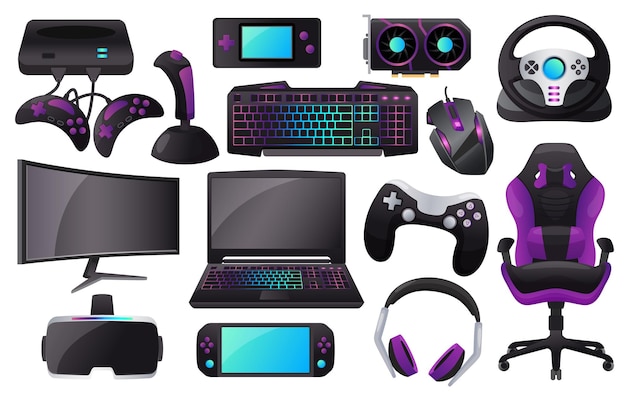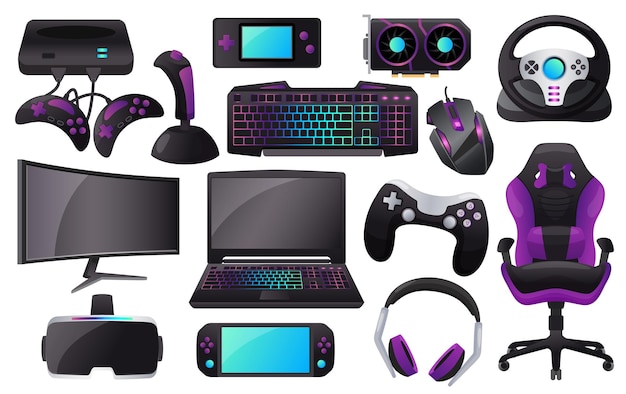For a gamer who takes their performance seriously, the right gear isn’t just a luxury — it’s a necessity. Whether you’re pushing into esports tiers, streaming your gameplay, or grinding through marathon sessions, premium accessories can make a world of difference. Below, you’ll find five essential accessories that serious gamers should consider adding to their setup in 2025 — each with tips, buying criteria, and practical uses.

1. High‑Fidelity Gaming Headset (with Surround / Spatial Audio)
Sound is more than ambiance: in many competitive titles, directional audio cues like footsteps or distant gunfire can make or break decisions. A top-tier gaming headset with surround sound (or spatial audio) gives you an edge in awareness.
What to look for:
- Low latency / wired or lossless wireless connection
- Comfortable padding (memory foam, breathable fabric)
- Good microphone with noise reduction
- Support for spatial or 7.1 audio
- Detachable cables or modular parts for upgrades
Pro tip: Run sound calibration or profile tuning (if the headset software supports it) to match your environment (room acoustics, speaker position). This can sharpen your perception of audio directionality.
2. Precision Gaming Mouse (Ergonomic & High DPI)
A gaming mouse built for performance is a must — whether you’re aiming in FPS games or executing complex macros in MOBAs. A precision sensor, programmable buttons, and ergonomic handling all contribute to smoother, faster control.
Key features to prioritize:
- High-end optical sensor (e.g. > 12,000 DPI) with stable tracking
- Adjustable DPI steps and polling rate
- Ergonomic grip (palm, claw, fingertip) suited for your hand size
- Programmable side buttons or macro keys
- Customizable weight system (optional) for balance tuning
Extra tip: Test it on your mouse pad — the glide and surface friction impact how it “feels.” Many pro gamers prefer large, low-friction pads for rapid flicks and consistency.
3. Mechanical Gaming Keyboard (with Anti‑Ghosting / Macro Support)
Membrane keyboards may suffice for casual use, but serious gamers benefit greatly from mechanical switches and fast key actuation. A mechanical keyboard with anti-ghosting, customizable keys, and macro layers helps when you need multiple keypresses in rapid succession.
What matters:
- Choice of switch type (e.g. clicky, tactile, linear) based on preference
- NKRO / full anti-ghosting (for simultaneous multiple key recognition)
- Macro programming, profiles, and onboard memory
- Durable build (metal backplate, robust keycaps)
- Backlighting (RGB or per-key) for visibility and aesthetics
Gaming tip: Use a keyboard wrist rest to reduce fatigue, especially during long sessions. Also, keeping secondary macro keys or layer toggles within thumb reach can be hugely beneficial.
4. Ergonomic Gaming Chair / Desk Setup
Even the best peripherals won’t help if your body is under strain. An ergonomic chair and smart desk setup reduce fatigue, prevent posture issues, and keep you focused in long play sessions.
Chair features to prioritize:
- Adjustable lumbar support and tilt lock
- 4D or height-adjustable armrests
- Comfortable, breathable materials
- Stable base and caster wheels suited for your floor
Desk / layout tips:
- Ample surface space for multiple monitors and peripherals
- Cable management to keep wires out of the way
- Proper monitor positioning (eye level, ~60–70 cm away)
- Wrist rests or padding for keyboard / mouse area
Tip: Alternate posture via standing desks or adjustable-height setups if possible — frequent shifts reduce stiffness and maintain performance.
5. Wrist / Forearm Support & Cable Management Accessories
Over time, repetitive motion can lead to wrist strain, especially during intense gaming sessions. Meanwhile, messy cables can snag or get in the way. Combining support and tidy cabling lifts both comfort and reliability.
Support accessories:
- Gel or foam wrist rests for keyboard and mouse
- Ergonomic forearm pads (especially useful for console / hybrid setups)
- Mouse bungee or cable anchor to reduce drag
Cable management tools:
- Velcro or zip ties for bundling
- Under-desk trays or channels
- Adhesive clips to route cables cleanly
Tip: Route power cables separately from data cables to minimize electrical interference. Also, use extension cables of proper gauge if your setup spans a large area.
Wrapping Up & Choosing Your Combo
If budget is a constraint, start by investing in the headset and mouse first — these have the most immediate impact on gameplay. Then build toward a mechanical keyboard and ergonomic seating setup. Finally, refine your comfort and cable layout with support and management tools.
Always test gear where possible, consider compatibility (PC, console, hybrid), and regularly maintain your setup (cleaning, firmware updates, tightening screws). The right combination of accessories becomes part of your unspoken advantage in gameplay.
Conclusion
Serious gaming is as much about mindset as it is about tools. When your gear is optimized — from headset to wrist support — you remove distractions and let your reflexes, strategy, and execution shine through. Equip yourself intelligently, and the difference won’t just be felt — it will be seen on the scoreboard.
